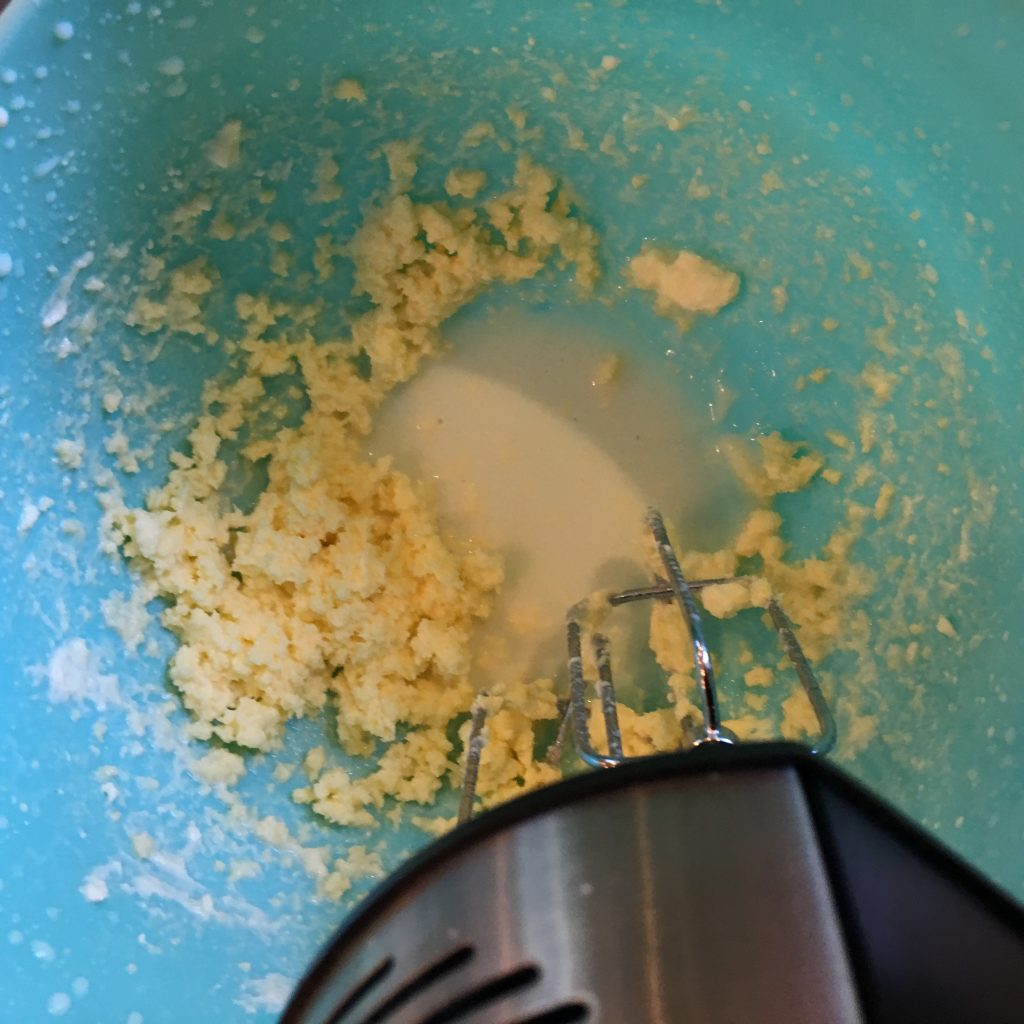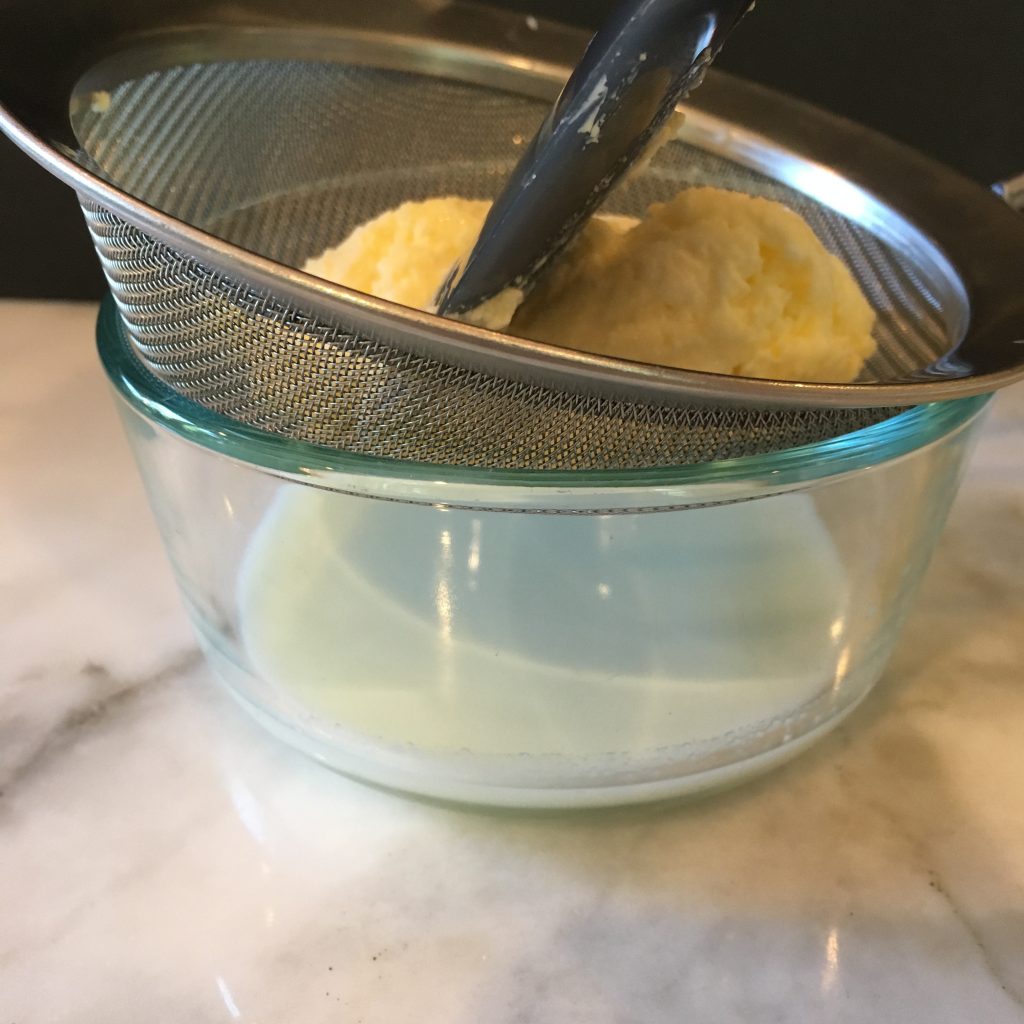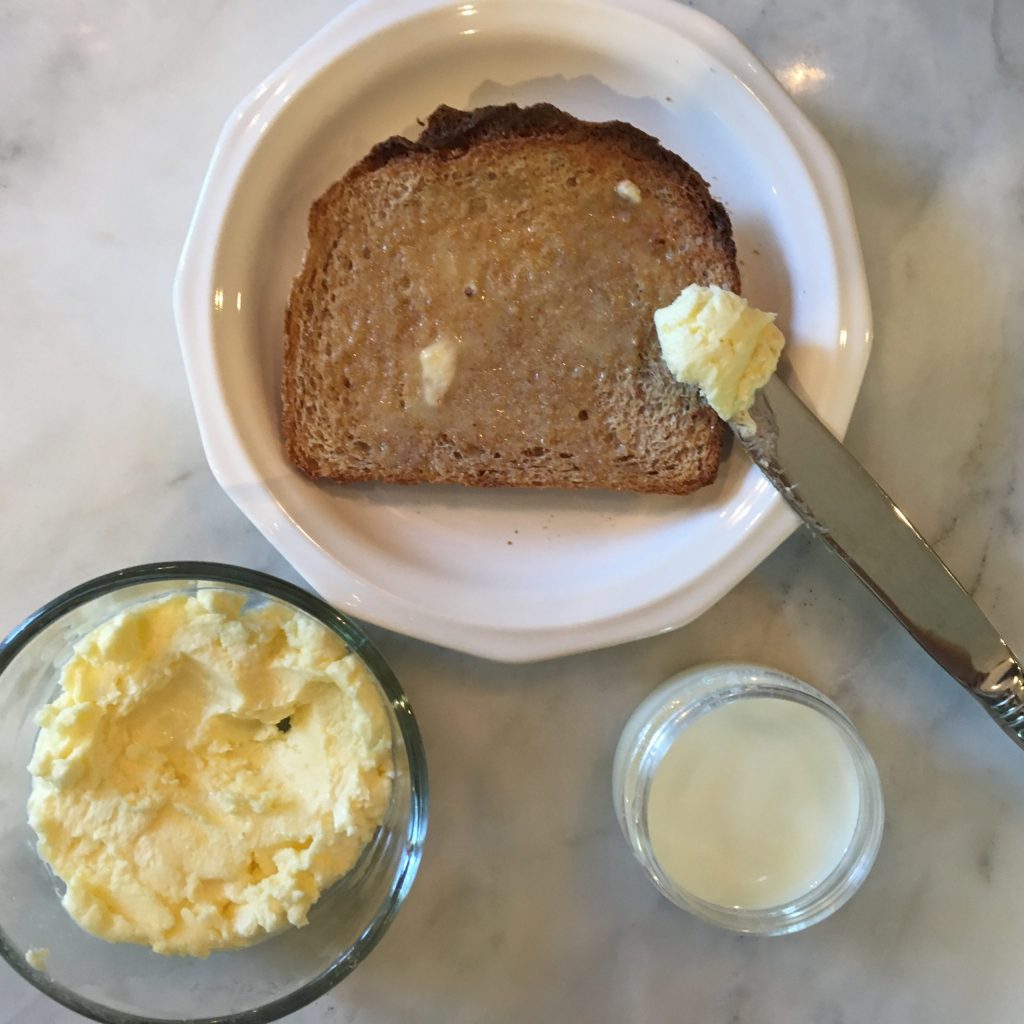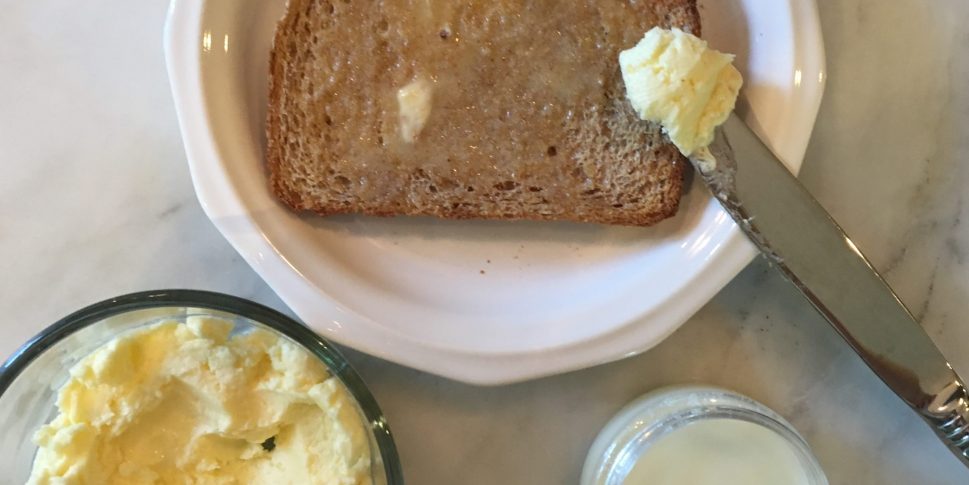Happy 4th of July, everyone! I hope you all stay safe, social-distanced, and have a great day! Today our science experiment is making butter because, in my opinion, the best part of 4th of July is the food! And what is more versatile than butter? So, let’s get started with this super simple experiment.
What you need:
- Heavy cream (I used 1/2 cup, but feel free to use as much as you want depending on how much butter you want)
- Salt (optional)
- A big bowl
- A mixer
- A sieve
- A small bowl
Steps:
- Pour heavy cream into the big bowl.

- Using a handheld beater or a mixer, begin to beat the cream on high speed.

- It will take a few minutes of mixing for the cream to have a whipped-cream like consistency. Continue beating the cream until it forms butter and buttermilk.

- Place your sieve over a small bowl and pour the cream through the sieve. This separates the butter and buttermilk.

- Rinse the butter with water to remove all traces of buttermilk to help keep the butter fresh longer. You can add salt now if you would like salted butter.
- Enjoy your butter on toast or any food of your choosing! Save the buttermilk to make fluffy buttermilk pancakes!

How is butter created?
The milk that comes from cows is a colloid, a substance in which small, insoluble particles are suspended throughout. In the case of milk, the insoluble particles are globules of fat that are distributed within the watery milk solution. Current farmers use a centrifugal separator machine to speed up the process of separation of the butter and buttermilk.
Similar to milk, cream contains tiny fat molecules that are suspended within a water-based solution. When you whip cream, you incorporate air into the cream, breaking the fragile shell holding each fat molecule and causing some of the fat molecules to clump together and form larger molecular clumps. As you continue to whip the cream, more of the fat molecules clump together, releasing the air pockets. This causes the internal structure, which until now had been able to hold the fat and water components together, to collapse and release buttermilk. Buttermilk is lower in fat than regular milk. It is more acidic, which is why it reacts with the baking soda in pancake batter, creating carbon dioxide bubbles and fluffy pancakes.
